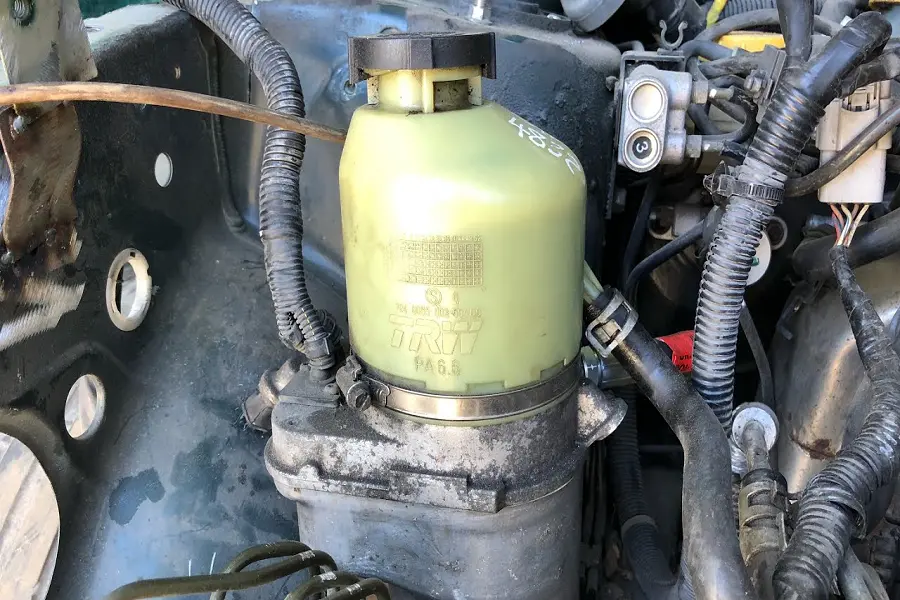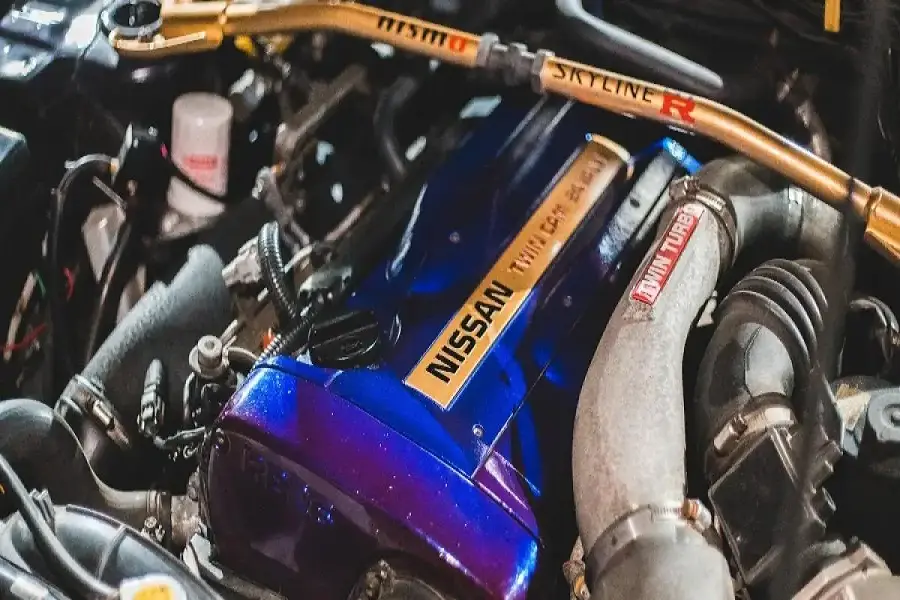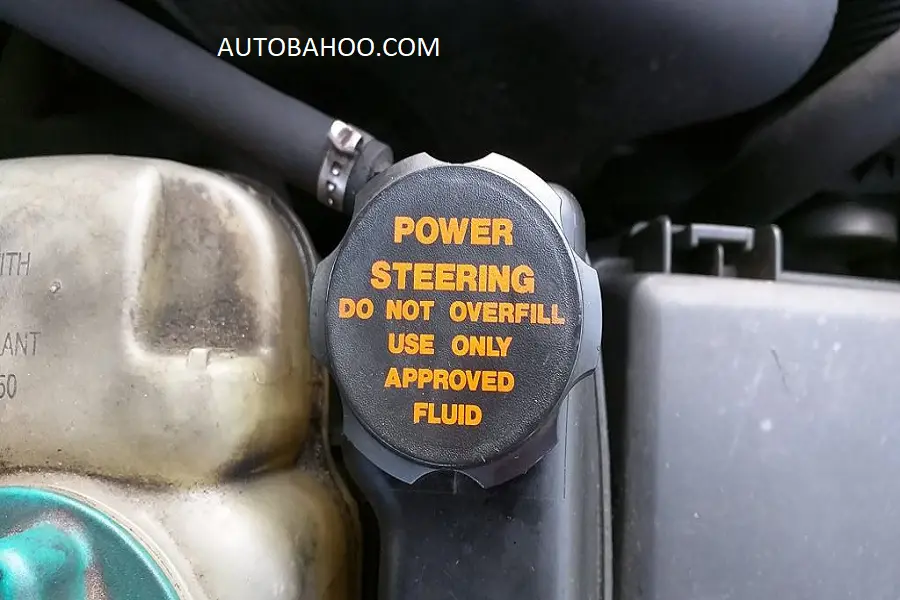What is Power Steering?
Power steering is a system that uses hydraulic or electric assistance to make it easier for drivers to turn the steering wheel and maneuver their vehicles. This technology reduces the physical effort required to steer, providing a more effortless and controlled driving experience, especially at low speeds or when parking.
The Power Steering Not Working system is composed of several key components, including:
- Steering Pump: Responsible for generating the hydraulic pressure that assists the steering mechanism.
- Power Steering Fluid: A specialized fluid that transmits the hydraulic pressure from the pump to the steering gear.
- Steering Gear: Converts the rotational motion of the steering wheel into the linear motion needed to turn the vehicle’s wheels.
- Hoses and Lines: Carry the power steering fluid to and from the various components.
How Does Power Steering Work?
Hydraulic power steering systems use the vehicle’s engine to drive the steering pump, which in turn pressurizes the power steering fluid. This pressurized fluid is then directed to the steering gear, providing a boost to the driver’s steering input.
When the driver turns the steering wheel, the steering gear senses the movement and signals the steering pump to increase the hydraulic pressure. This increased pressure is then applied to the steering mechanism, reducing the amount of physical effort required to turn the wheels.
In contrast, electric power steering (EPS) systems use an electric motor to provide the steering assistance, rather than a hydraulic pump. The electric motor is controlled by an electronic control unit (ECU) that monitors the driver’s steering input and adjusts the motor’s output accordingly.
Can You Drive Without Power Steering Fluid?
Driving without power steering fluid is possible, but it is not recommended. The power steering system is designed to provide a significant amount of steering assist, and without the fluid, the driver will experience significantly increased steering effort.
Attempting to drive without power steering fluid can be dangerous, as it can make the vehicle much more difficult to control, especially at low speeds or during emergency maneuvers. The increased physical effort required to turn the steering wheel can also lead to driver fatigue and decreased reaction times.
If the power steering fluid is low or the system is not functioning properly, it is important to address the issue as soon as possible to maintain safe and comfortable driving conditions.
Symptoms That Your Power Steering Fluid Isn’t Working
There are several common symptoms that may indicate a problem with the power steering system, including:
- Increased Steering Effort: If the steering wheel feels significantly heavier or more difficult to turn, it may be a sign of low power steering fluid or a problem with the system.
- Steering Wheel Vibration or Shaking: Vibrations or shaking in the steering wheel can be a sign of a problem with the power steering pump or other components.
- Whining or Groaning Noises: Strange noises coming from the power steering system, such as whining, groaning, or high-pitched squealing, can indicate a problem with the pump, belt, or other components.
- Sudden Loss of Steering Assist: If the power steering system suddenly stops providing assistance, it could be a sign of a more serious problem, such as a failed steering pump or a major fluid leak.
- Steering Fluid Leaks: Visible leaks in the power steering system, such as from the hoses or the pump, can indicate a problem that needs to be addressed.
If you experience any of these symptoms, it is important to have your vehicle’s power steering system inspected and serviced by a qualified automotive technician as soon as possible.
Why Your Power Steering Fluid Isn’t Working

There are several potential reasons why your power steering fluid may not be working properly, including:
Contaminated Fluid
Over time, the power steering fluid can become contaminated with dirt, debris, or moisture, which can lead to increased wear on the system’s components. This can cause the fluid to lose its lubricating properties and cause the pump or other components to fail.
Improper Fluid Levels
If the power steering fluid level is too low, the system will not be able to generate the necessary hydraulic pressure to provide steering assist. This can result in increased steering effort and potential damage to the pump or other components.
Broken Belts
The power steering pump is typically driven by a belt connected to the engine. If this belt becomes worn, cracked, or broken, the pump will not be able to operate, and the power steering system will not function.
Damaged Steering Pump
The power steering pump is a critical component of the system, and if it becomes worn, damaged, or fails, the power steering system will not be able to provide the necessary assist.
Too Much Force
In some cases, if the driver applies too much force to the steering wheel, it can overload the power steering system and cause the fluid to become aerated or the pump to fail.
How to Maintain Fluid and Fix Power Steering Problems
Proper maintenance and timely repairs are key to keeping your power steering system functioning properly. Here are some steps you can take to maintain your power steering fluid and address any issues that may arise:
Maintain Proper Fluid Levels
Regularly check the power steering fluid level and top it up as needed. Refer to your vehicle’s owner’s manual for the recommended fluid type and level. Be sure to address any leaks promptly to prevent low fluid levels.
Flush and Replace Fluid
Over time, the power steering fluid can become contaminated with dirt, debris, or moisture. It’s recommended to flush and replace the fluid at the intervals specified by your vehicle’s manufacturer, typically every 30,000 to 60,000 miles.
Replace Worn Belts
Inspect the power steering belt regularly for signs of wear, cracks, or damage. If the belt is worn, it should be replaced to ensure the proper operation of the steering pump.
Diagnose and Replace Faulty Pump
If the power steering pump is failing, it will need to be replaced. Signs of a failing pump include whining or groaning noises, increased steering effort, or a sudden loss of power steering assist.
Address Increased Steering Effort
If the steering feels unusually heavy or difficult to turn, it’s important to have the system inspected for any binding components or other issues that may be causing the increased effort.
By following these maintenance tips and addressing any power steering problems promptly, you can help ensure the longevity and proper functioning of your vehicle’s power steering system.
Power Steering Maintenance
Maintaining your vehicle’s power steering system is crucial for ensuring safe and comfortable driving. Here are some key power steering maintenance tips:
- Check Fluid Levels Regularly: Inspect the power steering fluid level regularly, and top it up if necessary. Refer to your owner’s manual for the recommended fluid type and level.
- Replace Fluid as Recommended: Follow the manufacturer’s recommended interval for flushing and replacing the power steering fluid, typically every 30,000 to 60,000 miles.
- Inspect Hoses and Connections: Regularly check the power steering hoses and connections for any signs of wear, cracks, or leaks. Address any issues promptly to prevent further damage.
- Replace Worn Belts: The power steering pump is often driven by a belt connected to the engine. Inspect this belt regularly and replace it if it shows signs of wear or damage.
- Monitor for Unusual Noises: Listen for any whining, groaning, or other unusual noises coming from the power steering system, as these can be signs of a problem that needs attention.
- Address Steering Concerns Promptly: If the steering feels heavier than normal or the vehicle is difficult to maneuver, have the power steering system inspected and serviced as soon as possible.
- Avoid Excessive Steering Force: Refrain from applying excessive force to the steering wheel, as this can overload the power steering system and cause damage.
By following these maintenance best practices, you can help ensure your vehicle’s power steering system continues to function properly, providing a safe and comfortable driving experience for years to come.
20 Common Power Steering Issues You Should Know

Understanding these problems and their causes is crucial for maintaining a safe and reliable driving experience.
1. Low Power Steering Fluid
- Causes: Fluid leaks, gradual fluid consumption over time
- Symptoms: Increased steering effort, especially at low speeds
2. Contaminated Power Steering Fluid
- Causes: Dirt, debris, or moisture in the fluid
- Symptoms: Increased steering effort, whining/groaning noises, accelerated component wear
3. Worn or Damaged Power Steering Belt
- Causes: Normal wear and tear, lack of maintenance
- Symptoms: Squealing/whining noises when turning, sudden loss of power steering assist
4. Failing Power Steering Pump
- Causes: Wear, bearing failure, fluid contamination
- Symptoms: Whining/groaning noises, sudden loss of power steering, increased steering effort
5. Binding or Stiffness in the Steering System
- Causes: Worn or damaged steering components (linkage, ball joints, tie rods)
- Symptoms: Increased steering effort, steering wheel vibration/shaking, difficulty centering
6. Steering Fluid Leaks
- Causes: Damaged hoses, pump, or other components
- Symptoms: Fluid puddles/drips under the vehicle, visible moisture around power steering parts
7. Power Steering Rack Failure
- Causes: Wear, physical damage, lack of maintenance
- Symptoms: Vague or wandering steering feel, difficulty centering the wheel
8. Electronic Power Steering (EPS) Sensor Issues
- Causes: Sensor malfunction, wiring problems
- Symptoms: Sudden loss of power steering assist, warning lights
9. Faulty Power Steering Control Module
- Causes: Electrical issues, software problems
- Symptoms: Erratic power steering behavior, warning lights
10. Worn or Damaged Tie Rods
- Causes: Normal wear and tear, impact damage
- Symptoms: Wandering or unstable steering, excessive play in the steering wheel
11. Loose or Worn Steering Linkage
- Causes: Worn ball joints, tie rod ends, or other components
- Symptoms: Vague or imprecise steering feel, clunking noises
12. Power Steering Hose Failure
- Causes: Age, abrasion, high pressure
- Symptoms: Fluid leaks, loss of power steering assist
13. Clogged Power Steering Filter
- Causes: Contaminated fluid, lack of maintenance
- Symptoms: Increased steering effort, whining noises
14. Malfunctioning Power Steering Solenoid
- Causes: Electrical issues, wear
- Symptoms: Intermittent power steering assist, warning lights
15. Worn Power Steering Gear
- Causes: Normal wear and tear, lack of maintenance
- Symptoms: Vague or imprecise steering feel, excessive play in the wheel
16. Damaged Power Steering Pressure Sensor
- Causes: Electrical issues, physical damage
- Symptoms: Erratic power steering behavior, warning lights
17. Leaking Power Steering Rack
- Causes: Seal failure, physical damage
- Symptoms: Fluid leaks, loss of power steering assist
18. Power Steering Line Obstruction
- Causes: Kinks, corrosion, or foreign objects
- Symptoms: Increased steering effort, whining noises
19. Malfunctioning Power Steering ECU
- Causes: Electrical issues, software problems
- Symptoms: Erratic power steering behavior, warning lights
20. Worn Power Steering Bushings or Mounts
- Causes: Normal wear and tear, physical damage
- Symptoms: Steering wheel vibration, imprecise steering feel
By understanding these common power steering issues and their symptoms, you can be proactive in addressing any problems that arise and ensure the continued safe and smooth operation of your vehicle’s steering system. Remember, if you encounter any of these issues, it’s best to have your vehicle inspected and serviced by a qualified automotive technician, such as those at Christian Brothers Automotive, to get your power steering system back in top shape.
About Christian Brothers Automotive
Christian Brothers Automotive is a trusted name in the automotive repair industry, with a commitment to honest, high-quality service and a focus on customer satisfaction. With locations across the United States, Christian Brothers Automotive offers a wide range of automotive services, including power steering repair and maintenance.
Their team of certified technicians uses the latest diagnostic equipment and techniques to identify and address power steering issues, ensuring that your vehicle’s steering system is functioning at its best. Whether you need a power steering fluid flush, a belt replacement, or a more complex repair, the experts at Christian Brothers Automotive have the knowledge and expertise to get the job done right.
With a focus on transparency, Christian Brothers Automotive provides customers with clear explanations of the necessary repairs and the associated costs, allowing you to make informed decisions about the care of your vehicle. Their commitment to customer service and their dedication to maintaining the highest standards of workmanship make them a trusted partner for all your automotive repair needs.
FAQ: Power Steering Not Working
Can I drive without power steering fluid?
While it is possible to drive without power steering fluid, it is highly inadvisable. Doing so will significantly increase the physical effort required to steer the vehicle, making it much more difficult to control, especially at low speeds or during emergency maneuvers. Attempting to drive without power steering fluid can be dangerous and should be avoided. If you notice your power steering fluid is low, it is crucial to have the system inspected and topped up by a qualified technician as soon as possible to maintain safe driving conditions.
What are the symptoms of low power steering fluid?
The primary symptom of low power steering fluid is increased steering effort. The steering wheel will feel heavier and more difficult to turn, especially at low speeds. Other signs may include whining or groaning noises coming from the power steering system, as well as a sudden loss of steering assist. If you experience any of these issues, it is important to have the power steering system checked for leaks and the fluid level topped up to the manufacturer’s recommended level.
Can contaminated power steering fluid cause damage?
Yes, contaminated power steering fluid can indeed cause damage to the system. As the fluid becomes dirty or contaminated with moisture, it can lose its lubricating properties, leading to accelerated wear on components like the pump and steering gear. This can result in increased steering effort, unusual noises, and potentially even component failure. To prevent this, it is crucial to flush and replace the power steering fluid at the intervals specified by the vehicle manufacturer, typically every 30,000 to 60,000 miles.
How do I know if my power steering pump is failing?
The most common signs of a failing power steering pump include whining or groaning noises, sudden loss of power steering assist, and increased steering effort, especially at low speeds. If you notice any of these symptoms, it is important to have the pump inspected and potentially replaced by a qualified technician. Ignoring a failing pump can lead to further damage to the power steering system and make the vehicle much more difficult to control.
Can a power steering fluid leak cause other problems?
Absolutely. A power steering fluid leak can have several negative consequences. First and foremost, the leak will lead to a gradual loss of fluid, causing the overall level to drop. This low fluid level can then result in increased steering effort and potentially damage to the pump or other components. Additionally, the fluid leak itself can lead to contamination of other nearby systems, such as the brakes, which can compromise their function and safety. Prompt repair of any power steering fluid leaks is essential to maintain the proper operation of the entire steering system.

With over 5 years of dedicated experience in the automotive industry, I am passionate about all things automotive. My journey began with a deep curiosity for automobiles, which led me to delve deeper into their mechanics, technology and trends. My expertise spans various aspects of the automotive world, from the latest electric vehicles to classic car restoration techniques. Through my articles, I aim to share my knowledge and insights, helping readers stay informed and inspired in the fast-paced world of the automobile.











